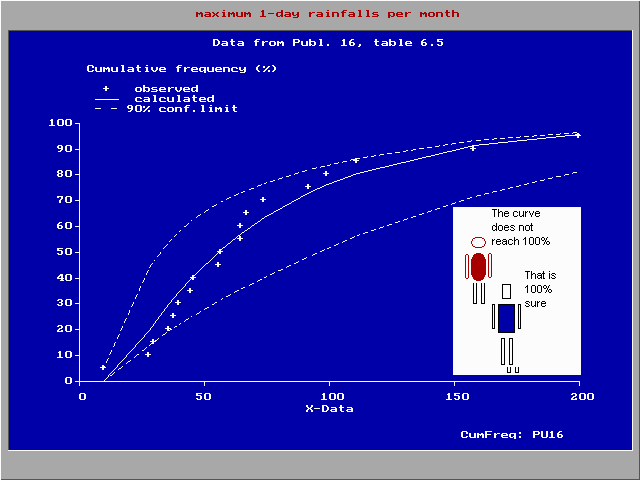FREQUENCY AND REGRESSION ANALYSIS
PART I: FREQUENCY ANALYSIS
This article discusses the role of frequency analysis
of agricultural data to appreciate the occurrence of
climatic phenomena, like rainfall, and soil
properties. It deals with different techniques of
frequency analysis. In addition it introduces the
principles of probability distribution fitting with
emphasis on the normal, Gumbel, and exponential
distributions.
TABLE OF CONTENTS
6.1 Introduction
6.2 Frequency Analysis
6.2.1 Introduction
6.2.2 Frequency Analysis by Intervals
6.2.3 Frequency Analysis by Ranking of Data
6.2.4 Recurrence Predictions and Return Periods
6.2.5 Confidence Analysis
6.3 Frequency-Duration Analysis
6.3.1 Introduction
6.3.2 Duration Analysis
6.3.3 Depth-Duration-Frequency Relations
6.4 Theoretical Frequency Distributions
6.4.1 Introduction
6.4.2 Principles of Distribution Fitting
6.4.3 The Normal Distribution
6.4.4 The Gumbel Distribution
6.4.5 The Exponential Distribution
6.4.6 A Comparison of the Distributions
6.7 References
|
Category
selection:
Software
& models
Articles
& manuals
Reports
case studies
FAQ's
& papers
Home
page
|
|

